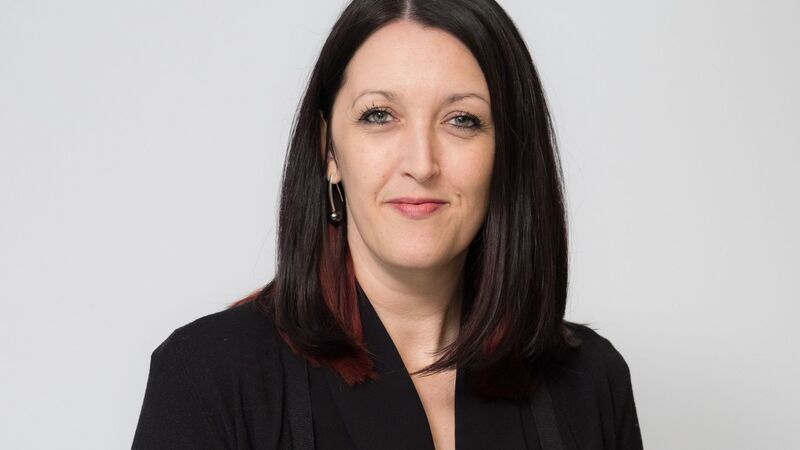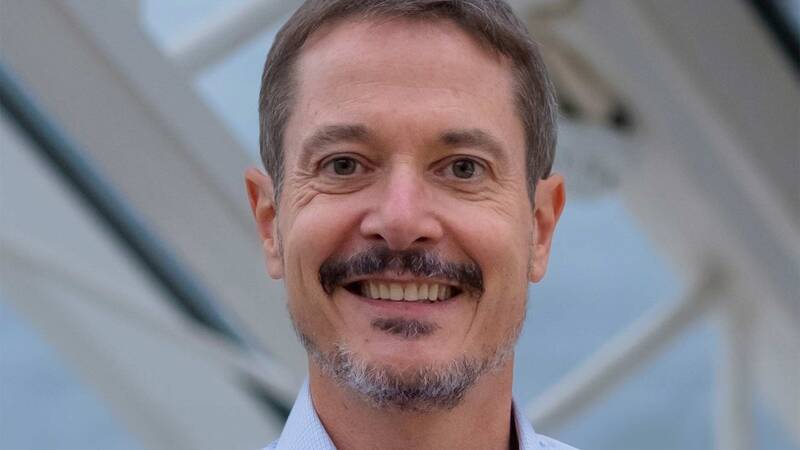You are viewing your 1 free article this month. Login to read more articles.
Williams juggles demands of changing academic markets at home and overseas
The dramatic changes facing academic publishing in the past 18 months make it an “interesting” time to be leading a publishing company, says Emerald Publishing c.e.o. Vicky Williams: “Intellectually, you are very stretched, all the time, in terms of which way to go.” Plan S has been accelerating the move to Open Access, and there has been pushback from academic institutions against how publishers want to do business sparking high-profile “no-deal” withdrawals, such as the University of California’s wholesale cancellation of Elsevier subscriptions.
Williams, who took the top role at the Yorkshire-based social science publisher at the start of last year, has a challenge on her hands, not least because the market is moving at different speeds, with science, technology, engineering and mathematics (STEM) disciplines at the start of the curve and humanities and social sciences (HSS), less well funded, following behind, while funders are putting forward testing mandates. Globally, it’s the same story. While European funders are pushing to make research Open, Asia is “nowhere near ready”, she explains. “So if we are saying a certain percentage of our output is now freely available anywhere in the world, we are creating lots of holes in our subscription business. It’s a very complex thing to work out how you balance all these pieces commercially.”
At the same time, Williams is clear that there is much to embrace in the new environment. “All of these changes have enabled us to step back and really evaluate where we want to be,” she says. “And much of that is really predicated on what our communities need. What I wanted to do when I took over was to really think about Open Research as an opportunity for all actors in the ecosystem. I think, working in the right way, with the right level of consultation, it can be a real opportunity.”
Yorkshire-based Emerald, launched in 1967 by Dr Keith Howard, is still a family-owned independent, with Howard, now in his mid-80s, spending two or three days in the office each week. Beginning as a business and management publisher, it has since broadened out in the social sciences, its mission being to publish research with real-world impact. A series of acquisitions in recent years has seen the wider company develop a group structure, with buys including e-learning company GoodPractice, creative agency Research Media and, in March of this year, sizeable digital learning company Mind Tools, housed in a separate division, Emerald Learning. In May, Emerald Publishing was named Academic, Professional & Educational Publisher of the Year at The British Book Awards.
Williams has worked for Emerald for close to 20 years, in a variety of business development, HR and marketing leadership roles, including a four-year stint in Bristol heading start-up Research Media. Since taking the top job in the publishing division, she has focused on equipping Emerald for the “dramatically” changing future.
Earlier this year, Emerald launched its first major response to the new academic environment, an OA platform, Emerald Open Research, created in collaboration with the Faculty of 1000, experts in open platform technology and Open Research workflow. “We wanted to learn from the best,” says Williams.
Six gateways have been opened for submissions thus far. Importantly, while the platform serves the social sciences community, the gateways are interdisciplinary, aligned to the UN Sustainable Development Goals, with the gateways covering themes such as Healthy Lives, Responsible Management and Sustainable Cities. “I think this [interdisciplinary approach] is another way in which the communication of research needs to evolve, and it’s something that funders are also looking for,” says Williams. “We can’t solve the big challenges of society if we stay confined in traditional disciplinary silos, so we are thinking about how we can support that.” The interdisciplinary approach is also reflected in its book publishing programme.
Emerald Open Research will use fully open peer review; submissions go through “rigorous” editorial checks but all peer review is done publicly after publication on the platform. “It’s not yet natural researcher behaviour. There’s some wariness of it, particularly if someone has been at the receiving end of some harsh comments,” Williams accepts. “But the spirit of this is for everything to be open and accountable; it’s about reimagining the whole workflow and the whole way of communicating research. We need to be thinking differently.”

It’s still early days for the platform, with Emerald currently largely funding the first tranche of article processing charges (APCs) itself. “We want to get to a point where we can look at different models which can support sustainable development of those gateways, which might be through working with institutions or funders rather than the individual researcher,” says Williams. “My real worry with Open Research is that the level of inequity across the globe, and across subject disciplines, means that we end up creating an unequal playing field because APCs will be prohibitive to many disciplines, and to many countries. So therefore you are publishing just a thin slice of the whole research output globally. We need to avoid re-creating any kind of inequity going forward, so I do think we want to think creatively about business models.”
June is a busy month: in a couple of weeks Emerald plans to launch its new Emerald Insight research platform, “a bottom-up reinvigoration of our technology, end-to-end from content ingestion through to data capture and marketing”. The platform has three engines: one that enables Emerald to break content down to small elements, so that it can be put together and made use of in multiple, different ways; then a highly configurable, flexible main platform offers a more personalised experience to those who use the platform; and at the end, a marketing engine that enables more sophisticated data capture to support that personalised approach. “It will enable us, hopefully, to really meet the user need in a way we are used to experiencing now with any information service we use. With Netflix, or Amazon, we are used to dealing with businesses that can get to know us, and I don’t think publishing should be any different,” says Williams.
The platform has been some years in the making, but its launch will be “just the beginning” of an ongoing process of agile development. Content agnostic, it’s envisaged that in the future it’ll cater for Emerald publishing more in other formats—podcasts, videos, blogs or data underpinning the research. “If you search for something, you surface results regardless of what the content container is,” says Williams. “It’s really exciting for us to be able to think really differently about how we can best serve our customer needs, and that’s not just our traditional purchasers today, but our purchasers tomorrow.”
Also launching in beta this month is a dynamic online resource for Emerald’s Impact Literacy Toolkit, developed to help researchers thinking about a new research idea to plan for the broader impacts of their work from the start of the journey—important both to funders and to Emerald’s own mission. “Our whole ethos is research with impact, so how can we support pathways to broader impact, so that we can actually track how research is having an impact on society, on the economy, on policy, rather than just within academia?”
Ahead of the curve
Given its starting point as a management publisher, and its more recently developed gender and diversity publishing strand, it’s appropriate that Emerald has been ahead of the curve in starting to tackle gender equality and diversity issues for its workforce. Williams started pushing for change on gender four years ago, when she was the only female on the executive board.
“When I looked at the next level down, there were 12 or 15 people in that cohort, and only three women. I thought, ‘What is happening here? Are there things we are not doing to support female advancement?’ So I raised this as a potential issue, wanting to think about how we could create the right environment for gender diversity to thrive.”
A programme was launched to look at maternity and paternity policies, return-to-work and flexible working policies, and role modelling within the business, “lots of things that would enable women to have the right tool-kit and be able to feel confident in voicing concerns
if things weren’t happening the right way”. The leadership team is now 50/50 in gender terms, with the executive board “not far off”.
There’s a 2019 focus on LGBTQ issues, “and a push towards bringing your whole self to work—employees sharing stories about mental health, bereavement, things they are struggling with outside work. It’s created a very different kind of environment,” says Williams. “For me, if we want to be reflecting our communities in the way we think, our product development, the way we operate, then we need diverse thinkers. This feeds into all of the ways we work—a new idea through R&D, a marketing campaign—we need different eyes on that so that we are reflecting our communities rather than being too one- dimensional. We have a global workforce as well—more than a quarter of our employees are based abroad—and we would be absolutely remiss if we believed that all of the great ideas came from a small market town in Yorkshire.”
Is its Yorkshire base—in Bingley, not far from Bradford—important to the company’s identity? Williams says yes. “We have to fight for talent in a different way, because we don’t get that natural churn that would happen in the South. So we have to look at how we can provide the right employment experience for people, but it also means we recruit a lot of people from outside [publishing], and I don’t think that’s a bad thing. There’s a lot of benefit from getting an external view, stopping you existing in a bubble—particularly as we have to think so differently about how the future might look. We want people with business-to- consumer experience, or who have worked in agencies, who can bring a different skill-set and perspective.” The great academic institutions on Emerald’s doorstep are also a potential resource for developing R&D partnerships, as Emerald plans to do.
“I wouldn’t want us to move,” Williams says, adding: “I think we are still known as the slightly quirky Northern publisher, and I don’t mind that.”














